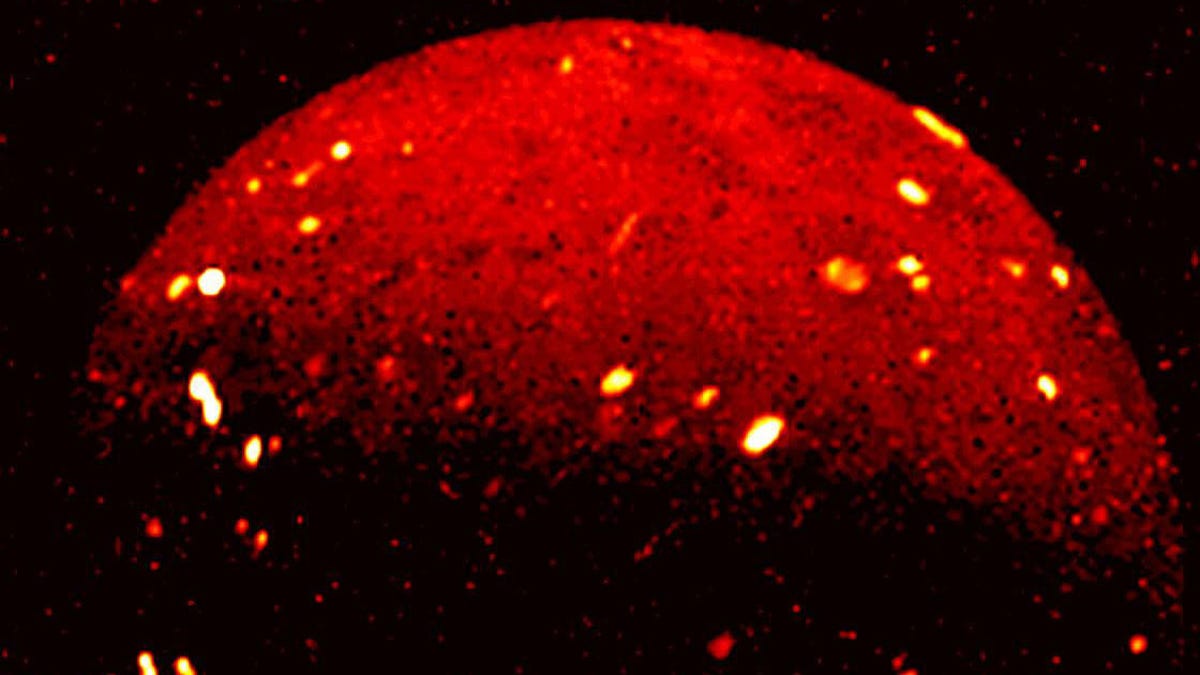Jupiter's Volcanic Moon Io Looks Hot in Infrared Image From NASA's Juno
The spacecraft takes a look at the most volcanically active world in the solar system.
Jupiter has an embarrassment of riches when it comes to moons. Among its 80 known moons is Io, which NASA describes as the most volcanically active world in the solar system. Io is about to take center stage as NASA's Jupiter-studying Juno spacecraft turns its cameras and instruments on the fiery moon.
In anticipation of capturing new Io views, NASA released a spectacular infrared image of Io that Juno snapped back in July from a distance of 50,000 miles (80,000 kilometers). The brighter the color, the higher the temperature, so all those flecks show just how volcanically peppy the moon is feeling.
In a statement on Wednesday, NASA said the Juno spacecraft was set for an Io photo session on Dec. 15. We're expecting some fresh images, but they'll be just an appetizer to the main course. Juno will be heading in for closer approaches of Io in 2023 and 2024.
Here's a fuller look at Juno's infrared view of Jupiter's moon Io. Volcanically active features are seen in the bright spots indicating higher temperatures.
Juno arrived at Jupiter in 2016 and got a mission extension in 2021 for a series of flybys of some of Jupiter's most interesting moons. Io is the latest to receive attention.
Juno is building on an already impressive photography portfolio from flybys of the moons Ganymede and Europa. The spacecraft's up-close views showed just how wild those surfaces are. Europa is particularly interesting since it will be the focus of NASA's upcoming Europa Clipper mission. The moon is considered a good place to look for signs of life in our solar system.
Io is a little larger than Earth's moon. It's known for molten lava lakes and eruptions. Juno even spotted an active volcanic plume in late 2018.
NASA has planned nine flybys for Io. It will be about more than just pretty pictures. Researchers will be studying how Io interacts with Jupiter and how the moon is connected to the gas giant's auroras.
If we're lucky, we'll get to see Io in a new way, getting up close and personal with its volcanic features. Maybe we'll even get to see it spit lava. That would be hot.


